I peered into the pool below the dam, the start of a stream I had been following for the past mile or so. On my hike, I had quickly passed a lot of promising water (and a lot of nice scenery) to make it to this pool. As my eyes adjusted, I knew I’d made the right choice.
I could see fish swimming in the clear water below. A lot of fish. Bluegills, yellow perch, creek chubs, brown trout, even a large northern pike. A mix of native and non-native species, not so different than you’d find in many U.S. waters. My eyes kept scanning. These were not the fish I was looking for.
There: I saw a small school of silvery fish with flaming red tails. Rudd.
Rudd? Let me explain.
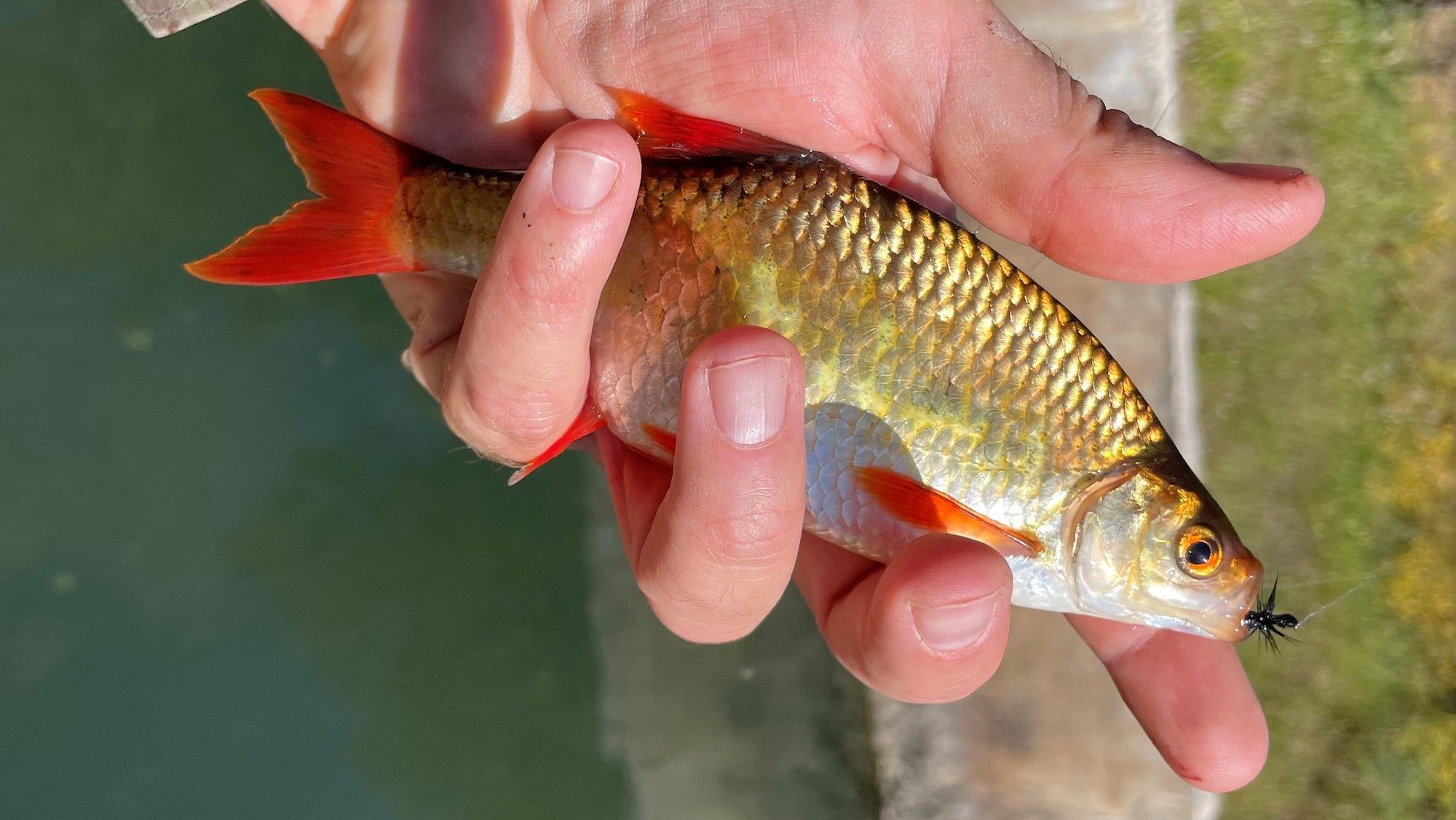
I was in the Black Hills of South Dakota, here to give a presentation on “the future of fishing” for an organization called the Aquatic Resources Education Association (AREA). AREA’s members are devoted to angler education and outreach. The conference host, Maggie Lindsey, offered to take me fishing. Just tell me what you want to catch, she had said, no doubt thinking I’d suggest trout or walleye.
I’m always looking for weird fish, though, and knew the Black Hills had a couple: the Jack Dempsey cichlid and the rudd.
Maggie, I soon came to find out, is one of the more cheerfully passionate outdoor enthusiasts you will ever meet. An education services coordinator for South Dakota Game, Fish and Parks, she loves getting others outdoors and sharing her enthusiasm. For many years, she lived in a remote Alaska cabin living mainly on what she could hunt, fish and forage. She even jokingly suggested that her love of hunting and fishing helped hasten the demise of her first marriage.
Maggie had been there and done that. But she had never caught a Jack Dempsey cichlid. Or a rudd. I am not sure she had even heard of these species. Undaunted, she promised me she’d find out.
By my second day in South Dakota, I had already caught the Jack Dempsey cichlid, a colorful tropical fish that now swam in a hot spring-fed river. And now, below me in this tailwater pool, I could see the rudd. Now I just had to catch one.
But maybe I’m getting ahead of myself. What exactly is a rudd? And why is it in South Dakota?
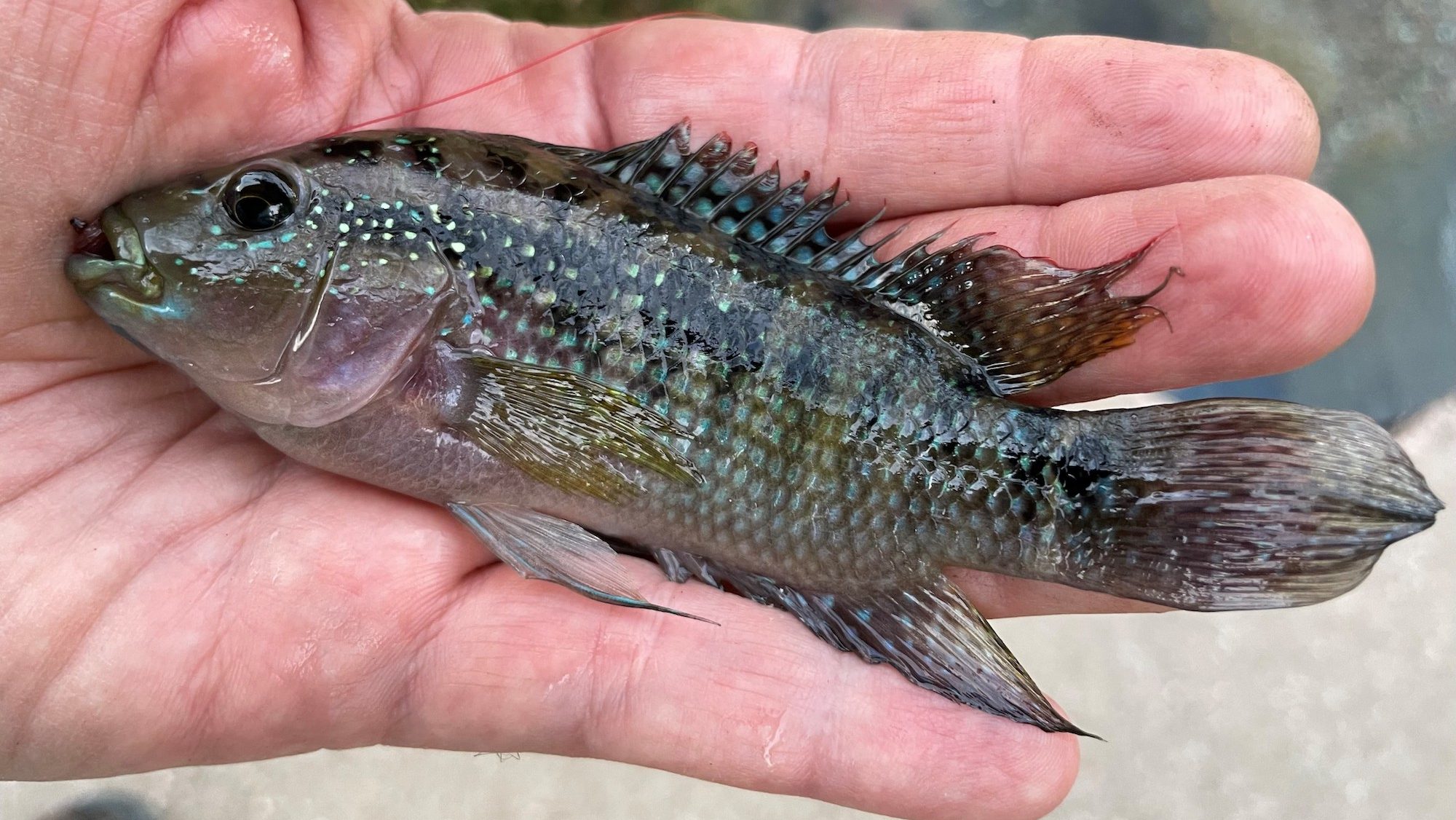
Meet the Rudd
The rudd is, to my mind, an attractive fish: a silvery hue with bright, almost glowing, red or orange fins. It can reach 20 inches and weigh 4 pounds, and is common and widespread in its native range in Europe and western Asia.
Great Britain has a long tradition of “coarse angling,” the pursuit of fish other than “game” species like trout and salmon. Coarse angling has its own traditions and literature, with books and periodicals devoted to the pursuit of rudd, roach, barbel and tench. As a fan of angling literature, this is where I first encountered the rudd.
The rudd is not native to South Dakota, or anywhere in North America.
There are many ways non-native species become established in new waters. Fishes are introduced on purpose for recreational fisheries, they escape from aquaculture facilities and they are dumped by pet owners. The rudd’s spread to more than 20 states in North America is due to another factor: bait buckets.
The use of live bait is a popular fishing tactic. It can also spread invasive species. Imagine an angler, finishing a day of fishing, with some minnows still in the bucket. The bucket gets dumped into the river and just like that a waterway has a new invasive species. (This happens with worms, too. Research has shown that worms dumped from bait containers have fundamentally changed northern forest ecology).
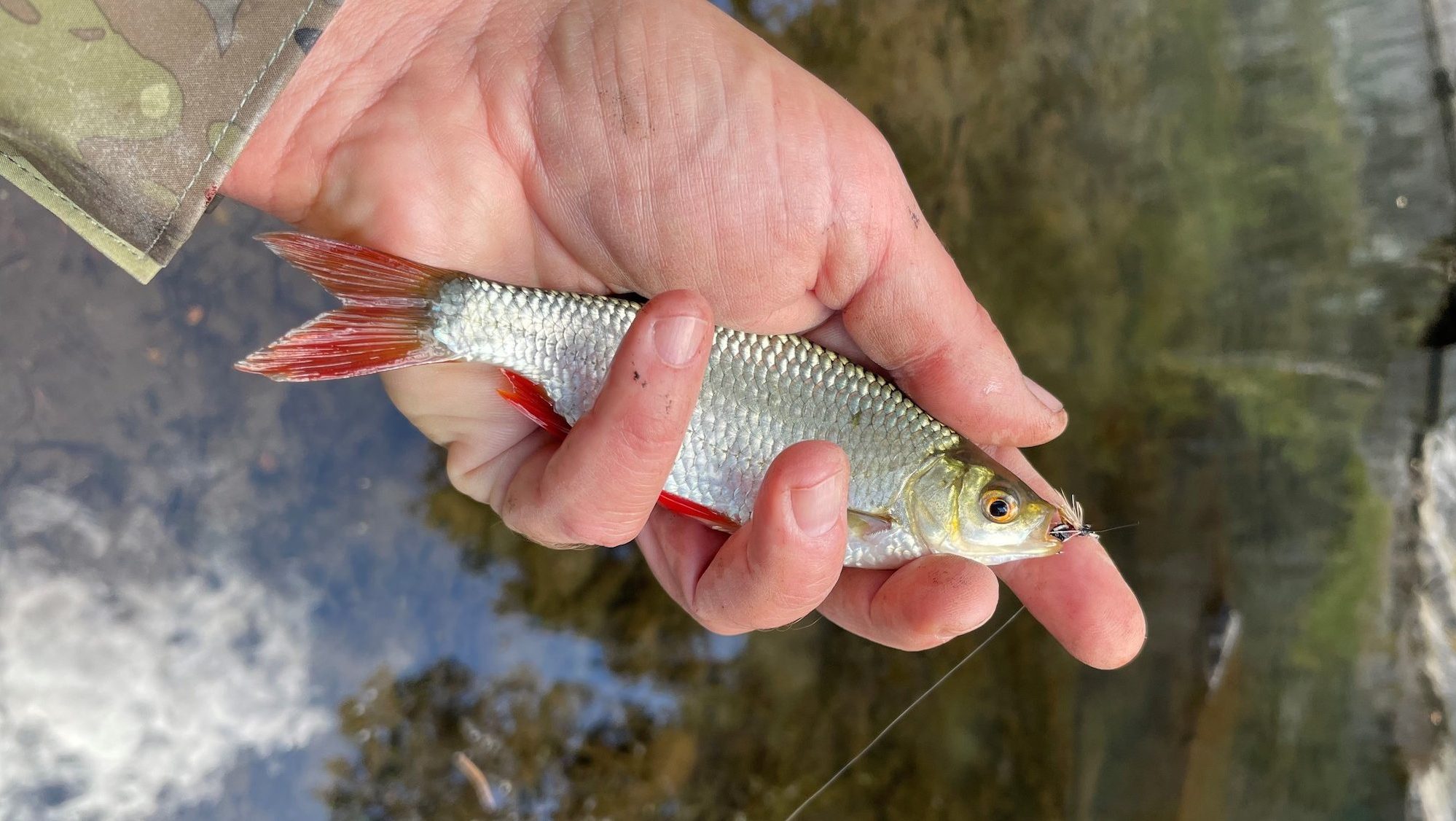
Many invasive fish are well known and well publicized. It’s difficult for a boater to miss a thousand jumping silver carp. Snakeheads garner headlines that label them as “Frankenfish.” But many invasive baitfish are small, and to many people (including anglers), a minnow is a minnow. But introduced bait minnows are widespread. You can find species like fathead minnows and spottail shiners pretty much across the country.
Regulations on the use of live minnows vary widely. Some states, like Idaho, ban the use of live minnows completely to prevent the spread of new species. But, for the most part, baitfish are widely popular.
Rudd are bigger than most baitfish species. But they have a reputation as being great bait for striped bass and other species. They also bear a superficial resemblance to golden shiners, one of the most popular bait species.
As such, rudd have been documented in more than 20 states, but they are nowhere near as widespread as many popular bait minnows. In most places, the populations seem to come and go. But they have established populations in waters around the Great Lakes and New York’s Finger Lakes. In South Dakota, they’ve been documented in 8 lakes, including several in the Black Hills.
If you use live bait, don’t dump leftover bait in the stream (or in the forest). Doing so could spread invasive species. Dispose of any unused bait in a garbage can.
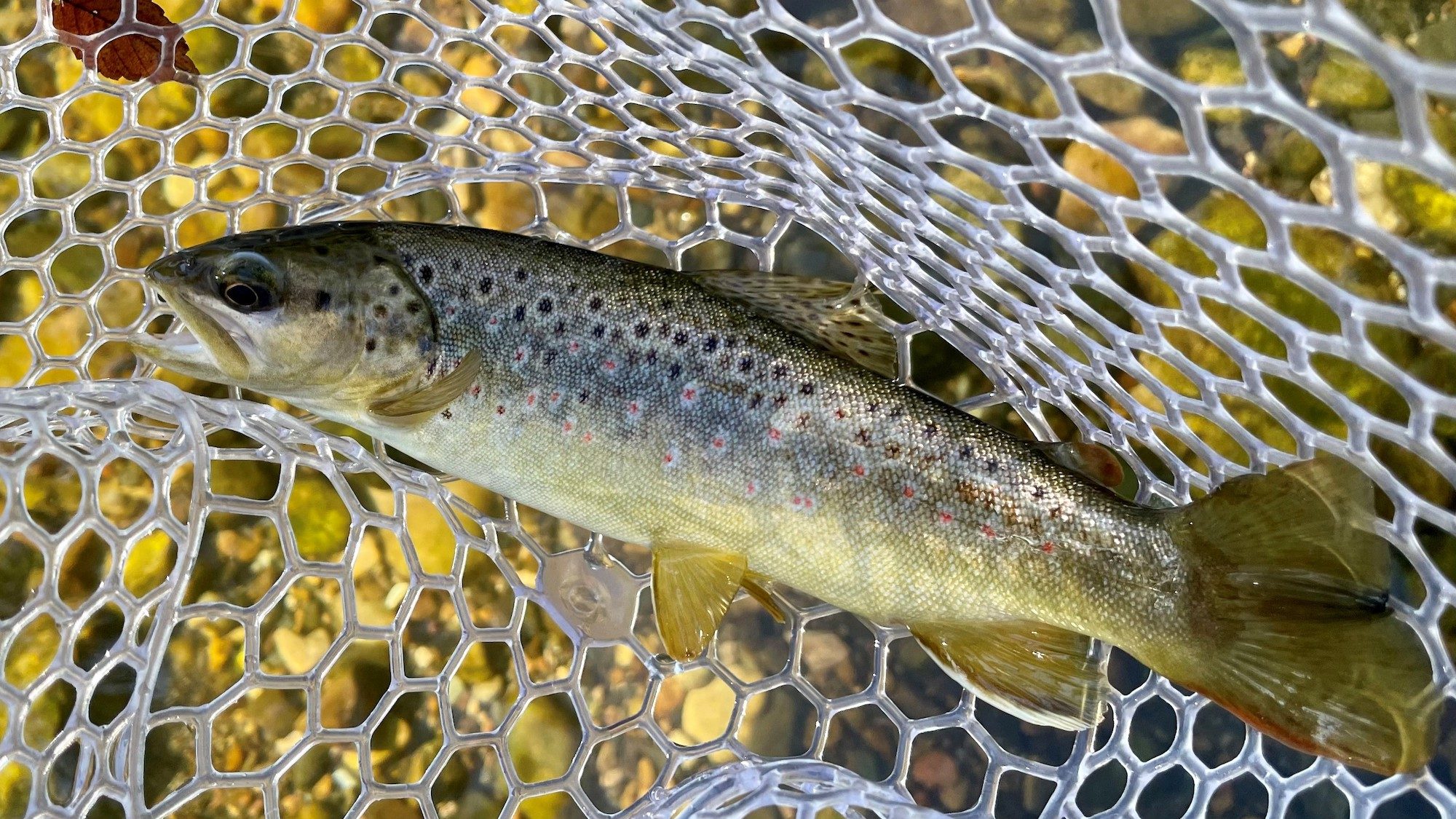
Rudd on the Fly
South Dakota’s Black Hills is a well-known tourist destination. The region is also popular for outdoor recreation, including fishing. That fishing includes blue-ribbon trout streams (that I would experience later), great northern pike lakes and other opportunities. But I was here for the rudd.
Maggie Lindsey and another South Dakota Game, Fish and Parks outreach staffer, Laurie Root, were happy to help. They dropped me off at a trailhead and said they’d fish the creek and catch up to me later.
I could hear their banter as they began catching fish in the creek, the easy laughs of friends sharing time on a creek. A big part of their work is introducing new people to the outdoors, and I could see how their enthusiasm was infectious. I could also sense they felt a little of that pressure when you’re hosting someone on a fishing trip. They wanted me to catch fish.

And the rudd were there, easily visible in the pool below the dam. I felt prepared. I used to be a light packer, but since this fishing quest my luggage has bulged with gear for every possible contingency. I decided to begin with the simplest of tactics, the one favored by British coarse anglers: a worm on a hook.
I cast and my bait was immediately attacked by a large bluegill. Subsequent casts attracted more bluegills as well as yellow perch. I walked along the pool, trying to place my bait right in front of the swimming rudd. Most ignored my bait. The rest darted away from it. This wasn’t working.
I broke out my fly rod, my preferred method. But I had no idea if this would work for these European fish. I tied on a tiny beadhead pheasant tail nymph and cast to a rudd. It swam over and eyed the fly, but didn’t take. I cast again. And this time, a rudd struck.
Even on the ultralight, the fight wasn’t dramatic. But what a beautiful fish, deep silvers accented with blood-red fins. Yes, an invasive species. But so are many fish we catch in North American waters.
Over the next hour, I caught several more.
I switched to a dry fly, a parachute ant pattern. I cast delicately into the deepest part of the pool. It was immediately engulfed by one of the ubiquitous bluegill. The next cast I was more careful and put it directly in front of a rudd, this one was blaze-orange fins.
I watched as the fish approached, pointed its head towards the fly and paused. Then sipped the ant down.
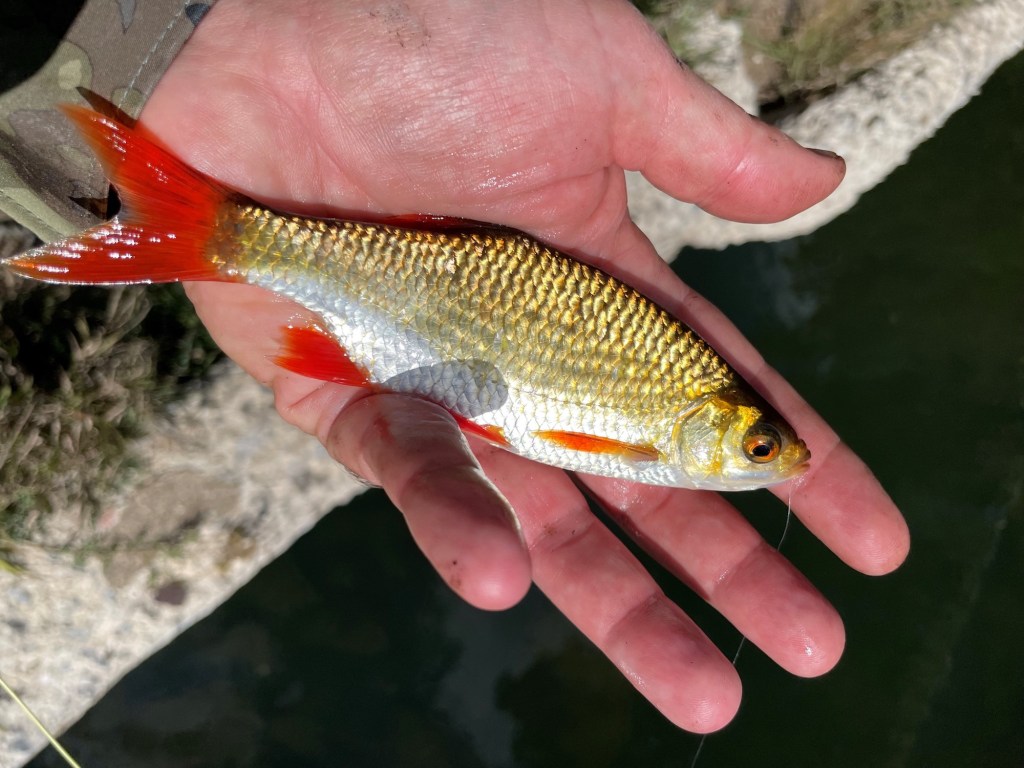



On a trip to visit family at a lakeside cottage in upstate New York my son, age 11, grew bored of the conversation with relatives, picked up a fishing rod, and one baited hook later landed a beautiful 6-inch red-finned fish that I had never seen before. He proceeded to catch a half-dozen more from the same shoreline spot–a big moment because it was his first time stalking and catching multiple fish without my help. I’ve no doubt he will appreciate those rudd for the rest of his life.
John,
Thanks for your comment. That is a great rudd encounter. Coincidentally, a few years ago I had an evening to fish in one of New York’s Finger Lakes during a work trip. I saw a swirl of a feeding fish and cast towards it. I immediately hooked a fish and as I brought it up, saw it was a large rudd. Just as I reached out, the rudd flipped off and back into the water. Of course, I never had so much as a nibble the rest of the evening. I thought that might be my only encounter with a rudd, until this South Dakota trip.
Best,
Matt